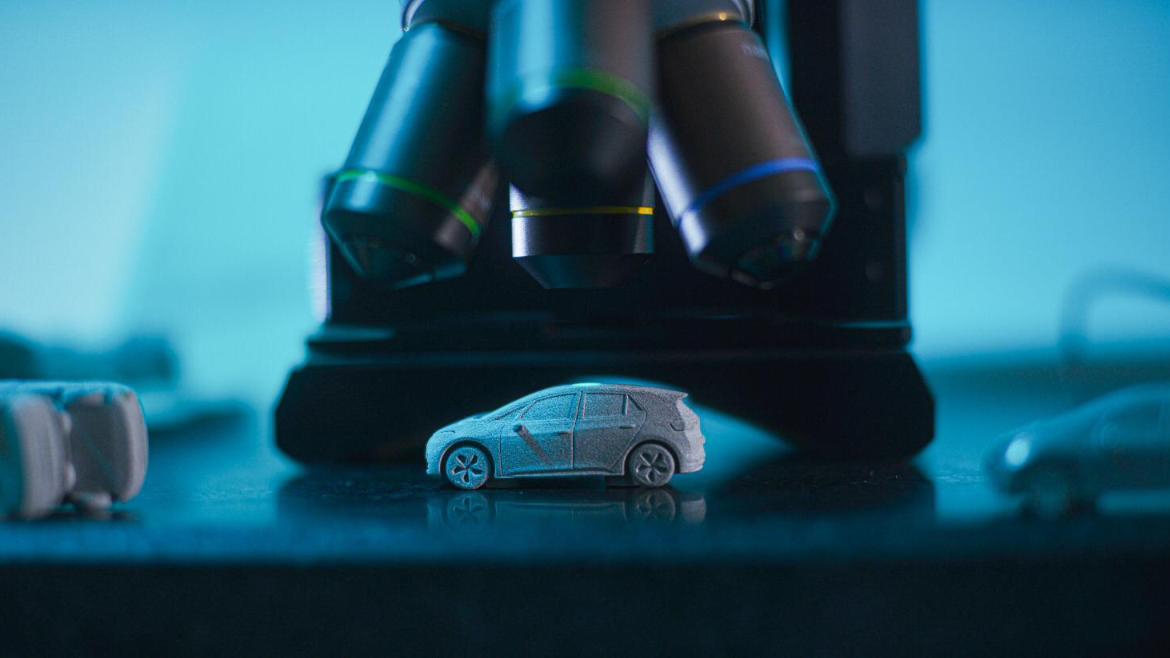3D-printed cars are a step closer to reality thanks to HP/Volkswagen partnership
Small metal replica cars now – full-on car parts soon enough

3D-printed parts could be in your car sooner than you think, at least if Volkswagen and HP (in conjunction with GKN Powder Metallurgy) have anything to do with it.
HP Metal Jet technology – in other words, metal 3D printing – is coming on leaps and bounds and will be a ‘game changer’ for the automotive industry, the two companies are claiming.
- 3D printing could be used to print human tissue
- Huge 3D printers might produce Mars-bound rockets soon
- These are the best 3D printers of 2019
This is based on the fact that HP printed 10,000 tiny metal 1:87 scale replicas (see above) of the Volkswagen ID.3 electric car for marketing purposes, although the real purpose was to demonstrate that Metal Jet technology is ready for commercial-scale production (with the run being completed in four weeks as an initial milestone).
A roadmap (appropriately) details where HP and Volkswagen are going with this in the future, with the initial stage of metal 3D printing being used to produce cosmetic parts like the aforementioned model cars for promotional purposes, or the likes of car keys.
The next stage, which is pegged as starting in 2019+ – so presumably imminently – entails the production of car parts like gearshift knobs and mirror mounts, and then in 2021, actual structural parts of cars will be 3D-printed (with impressive advancements in terms of weight-saving).
Exceeding expectations
Dr. Martin Goede, head of technology planning and development at Volkswagen, commented: “Our vision to industrialize additive manufacturing [3D printing] is quickly becoming a reality with HP Metal Jet, it is a game changer for the automotive industry. The pace of innovation by HP and advanced capabilities of the technology have exceeded our expectations. We are meeting our milestones and are actively identifying and developing functional parts for production.”
So progress is being made rapidly, then, and we’ve seen similar strides being made elsewhere in the automotive arena. That includes a recent 3D printing breakthrough in the production of high-resolution parts using very light continuous fiber composite materials that could be used in sports cars or racing bikes.
Are you a pro? Subscribe to our newsletter
Sign up to the TechRadar Pro newsletter to get all the top news, opinion, features and guidance your business needs to succeed!
And another firm already makes some astoundingly smart-looking and super-lightweight 3D-printed wheels for high-end sports cars like the McLaren P1.
Via Digital Trends
Darren is a freelancer writing news and features for TechRadar (and occasionally T3) across a broad range of computing topics including CPUs, GPUs, various other hardware, VPNs, antivirus and more. He has written about tech for the best part of three decades, and writes books in his spare time (his debut novel - 'I Know What You Did Last Supper' - was published by Hachette UK in 2013).